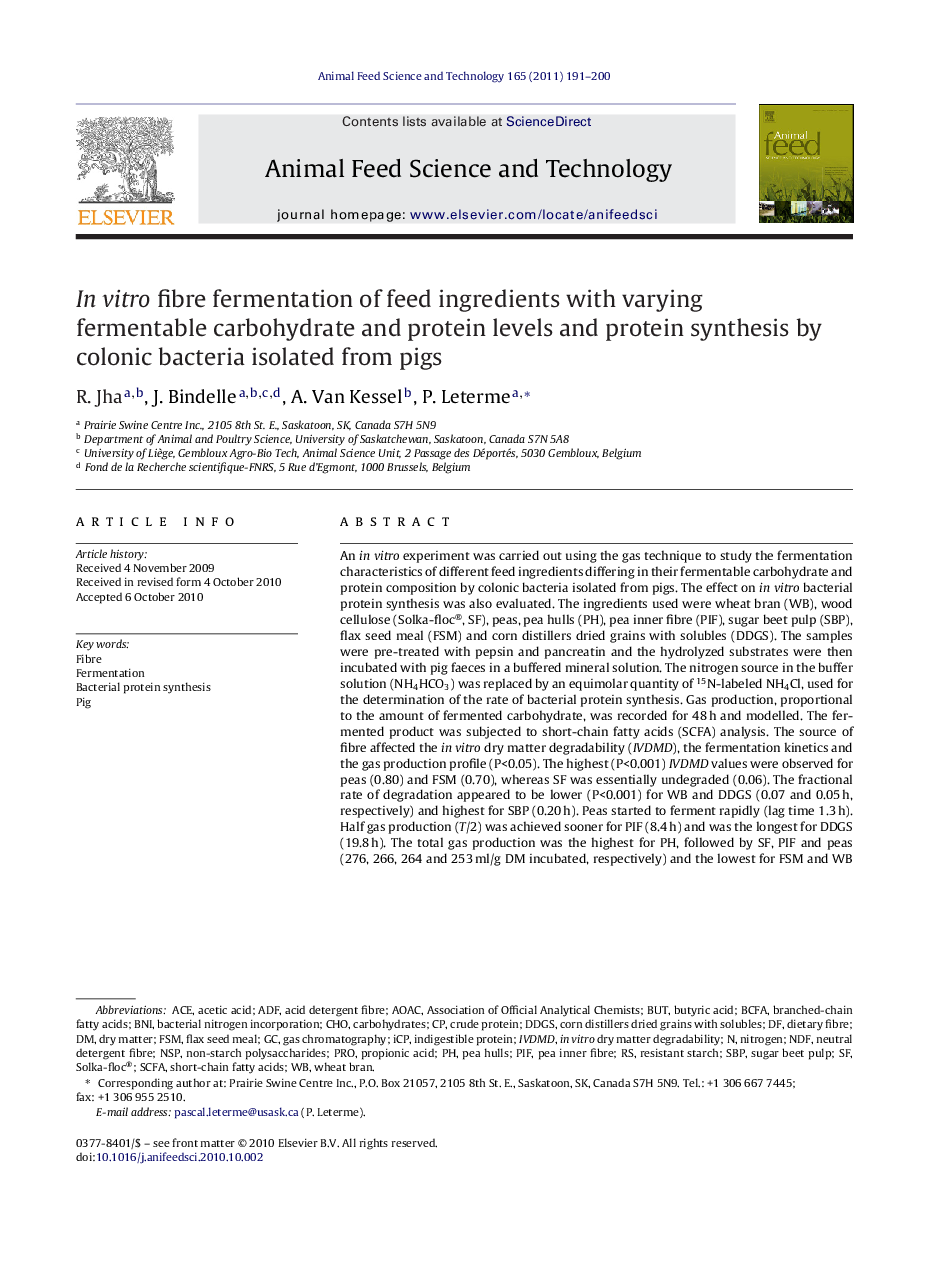| کد مقاله | کد نشریه | سال انتشار | مقاله انگلیسی | نسخه تمام متن |
|---|---|---|---|---|
| 2420066 | 1552431 | 2011 | 10 صفحه PDF | دانلود رایگان |

An in vitro experiment was carried out using the gas technique to study the fermentation characteristics of different feed ingredients differing in their fermentable carbohydrate and protein composition by colonic bacteria isolated from pigs. The effect on in vitro bacterial protein synthesis was also evaluated. The ingredients used were wheat bran (WB), wood cellulose (Solka-floc®, SF), peas, pea hulls (PH), pea inner fibre (PIF), sugar beet pulp (SBP), flax seed meal (FSM) and corn distillers dried grains with solubles (DDGS). The samples were pre-treated with pepsin and pancreatin and the hydrolyzed substrates were then incubated with pig faeces in a buffered mineral solution. The nitrogen source in the buffer solution (NH4HCO3) was replaced by an equimolar quantity of 15N-labeled NH4Cl, used for the determination of the rate of bacterial protein synthesis. Gas production, proportional to the amount of fermented carbohydrate, was recorded for 48 h and modelled. The fermented product was subjected to short-chain fatty acids (SCFA) analysis. The source of fibre affected the in vitro dry matter degradability (IVDMD), the fermentation kinetics and the gas production profile (P<0.05). The highest (P<0.001) IVDMD values were observed for peas (0.80) and FSM (0.70), whereas SF was essentially undegraded (0.06). The fractional rate of degradation appeared to be lower (P<0.001) for WB and DDGS (0.07 and 0.05 h, respectively) and highest for SBP (0.20 h). Peas started to ferment rapidly (lag time 1.3 h). Half gas production (T/2) was achieved sooner for PIF (8.4 h) and was the longest for DDGS (19.8 h). The total gas production was the highest for PH, followed by SF, PIF and peas (276, 266, 264 and 253 ml/g DM incubated, respectively) and the lowest for FSM and WB (130 and 124 ml/g DM incubated, respectively). There was no difference (P>0.05) in SCFA production after the fermentation of SF, P, PH, PIF and SBP (ranging from 3.8 to 4.5 mmol/g DM incubated) while WB and FSM yielded lowest (P<0.05) SCFA. The bacterial nitrogen incorporation (BNI), both at T/2 and after 48 h of fermentation was the highest (P<0.001) for PIF (18.5 and 15.6 mg/g DM incubated, respectively) and the lowest for DDGS and WB. In conclusion, peas and pea fibres had higher rates of fermentability, produced more SCFA and had high bacterial protein synthesis capacity. They thus have the potential to be included in pig diets as a source of fermentable fibre to modulate the gut environment and reduce nitrogen excretion.
Journal: Animal Feed Science and Technology - Volume 165, Issues 3–4, 12 May 2011, Pages 191–200